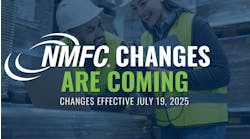BALTIMORE – The National Transportation Safety Board (NTSB) renewed its campaign this week to broaden the use of sleep disorder screening across all modes of transportation – air, rail, marine, and trucking – as part of long-term effort to significantly reduce the negative effects of fatigue.
“Last summer we recommended that all modes begin identifying people with high risk for sleep disorders and guide them to medical treatment,” Christopher Hart, NTSB’s vice chairman, said in a speech here at the Sleep Apnea and Trucking Conference. The two-day event is being hosted by the American Sleep Apnea Assn. and co-sponsored by the American Trucking Assns. (ATA) and Federal Motor Carrier Safety Administration (FMCSA).
“All transportation operations need to become more aware of OSA [obstructive sleep apnea],” Hart said. “The good news is that those suffering from sleep apnea can be treated and then return to work. But it’s important that we find better ways to diagnose and treat such sleep disorders.”
According to NTSB, OSA is a condition where airways become obstructed while sleeping, typically resulting in “hypoxia” or low blood oxygen levels at night. The obstruction leads to interruptions in breathing lasting several seconds at a time, loud snoring, and non-restful sleep. Individual with OSA are frequently entirely unaware of the condition, NTSB said, with the disorder leading to extreme daytime sleepiness and sufferers often falling asleep within minutes in a quiet or monotonous environment.
In addition to the substantial risks of impairment or incapacitation as a direct result of the fatigue associated with OSA, the untreated disorder increases the likelihood of other operationally relevant medical conditions, including stroke, heart failure, coronary artery disease, and diabetes, NTSB said.
However, there are few rules in transportation addressing OSA, NTSB noted. The Federal Aviation Administration (FAA) does not provide any guidance regarding risk factors for sleep disorders or identify any symptoms (for example, snoring) that might be related to OSA, while the Federal Transit Administration (FTA) has no formal medical standards for transit operators.
In trucking, FMCSA asks about sleep disorders, OSA, daytime sleepiness, and snoring on the questionnaire completed by commercial truck drivers undergoing examination for medical certification. Further, the FMCSA Medical Review Board in 2008 recommended that the adminstration require OSA screening for all drivers with a body mass index (BMI) over 30, but the FMCSA has yet to act on that recommendation, Hart said.
According to industry studies, some 28% of truck drivers suffer from OSA or “sleep apnea” as it’s referred to, compared to 6% for the general population. Yet OSA is only one of 70 different disorders, noted Mary Parrish, vp-transportation safety for the sleep disorder management firm Fusion Sleep.
“The real issue isn’t so much diagnosis and treatment of sleep disorders in the early stages, but on-going compliance with the treatments,” she told FleetOwner. “There’s also recognition now that it’s not just about how sleep disorders can increase fatigue, but how they impact truck driver wellness – potentially leading to obesity, type II diabetes, and high blood pressure, to name just a few conditions. There’s a rising medical cost issue here as well in terms of the health impact of sleep disorders.”
Anne Ferro, FMCSA’s administrator, said at the meeting that her agency is heightening its focus on sleep apnea.
“We consider fatigue to be a high risk behavior, something we’re addressing as part of our core mission to reduce severe and fatal crashes involving commercial motor vehicles (CMVs),” she said, pointing to agency data gleaned from it mammoth truck causation study that identified fatigue a factor in 13% of all fatal truck crashes, rising to 28% in single CMV crashes.
Ferro added that while there’s no “silver bullet” that can eliminate severe and fatal CMV crashes, incorporating sleep apnea screening is part of what she called a “silver buckshot” approach.
“There are a lot of different ways to we can improve safety, a lot of different methods we can deploy,” she said. “However, we also recognize that sleep apnea is a highly sensitive issue. The challenge is to develop screening and treatment options that are affordable and accepted by operators. But we know sleep apnea contributes to fatigue, that it interferes with safe driving. Thus sleep apnea is a threat to safety.”


